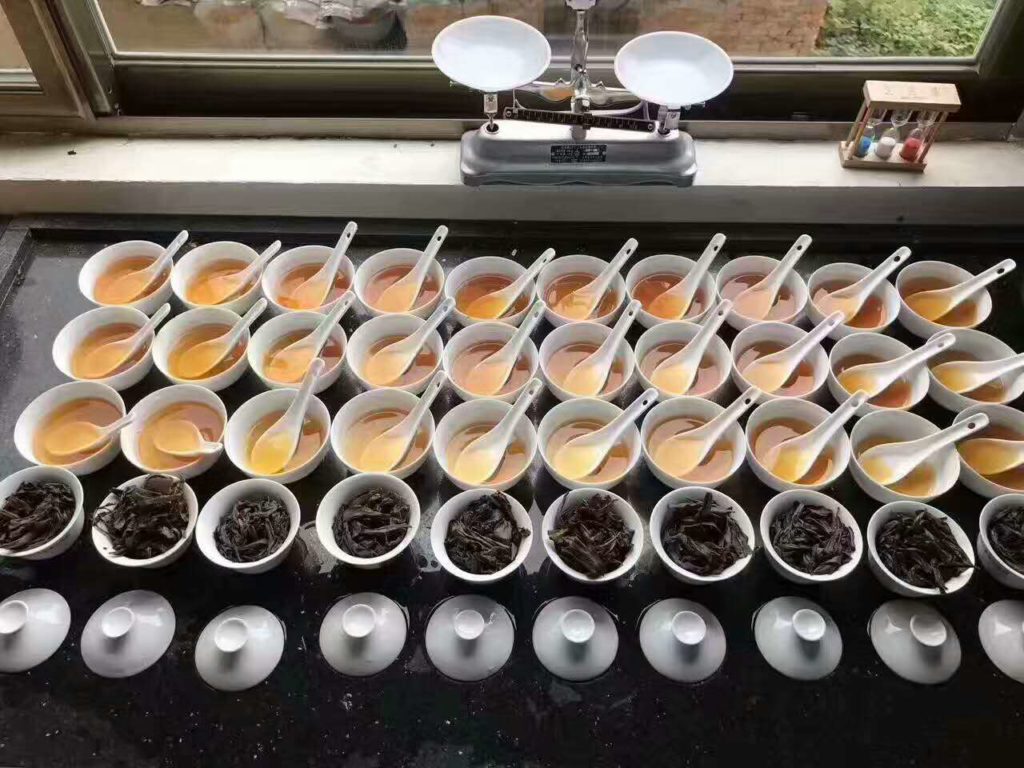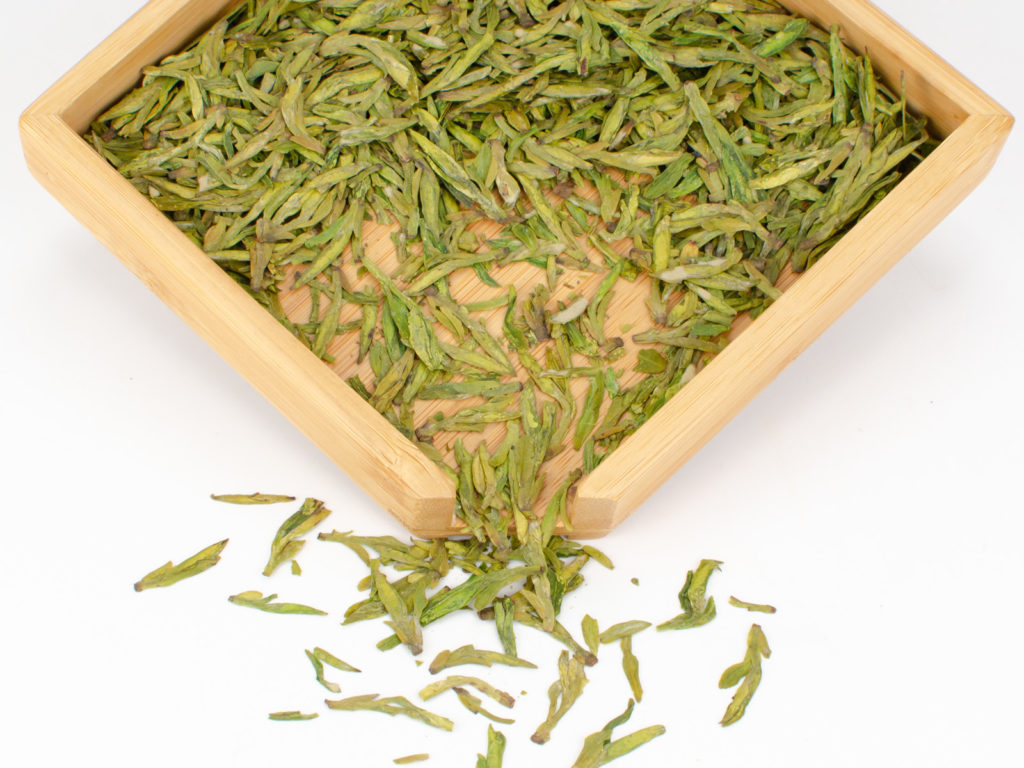Guidelines to help you judge a tea’s quality
We wanted to give some guidelines about judging the tea that you buy. These are just guidelines, however, and not rules. They serve as a nice starting point for judging your tea. The guidelines were loosely translated from the Chinese Encyclopedia of Tea. Keep in mind that you will have a pretty hard time determining much on the internet. Judging tea online is a vastly different exercise from being able to actually see and smell the tea as well as taste it before you commit to buying it. This is particularly the case if it is an expensive tea.
Tea, especially Chinese tea, has historically failed to be graded in an objective way. This especially applies to quality tea. Currently, the tea industry operates very differently from the coffee or wine industry. Can you imagine trying to grade fine wine? There are thousands of great teas to be discovered, and the best way to learn about tea is to experience it. Ultimately, the tea you like is great tea! We are very proud of our tea, but we encourage you to try other sites. So if you are exploring the vast world of tea, we hope this will help you.

1) Appearance
The shape of the leaf, and the color. The shape varies for different kinds of tea. The condition of the leaf says a lot about a tea. The unbroken tea leaf is always preferable, whether it is leaf or bud. Bitterness comes from broken leaves. Broken leaves are also a sign of machine-harvested tea. Keep in mind, however, that some tea, especially black tea, is purposefully cut to provide for stronger tasting tea. Also, many wulongs are deliberately ‘bruised’ or abraded to give flavor and improve appearance.
The dry leaves and wet leaves should be examined – wet leaves when they are fully opened. There is a lot to be learned from the wet leaf. How the leaf was oxidized is evident. There are many colors of dry green tea and the way it has been processed can be seen in the color. For example, hand fried leaves will be a little bit yellow, steamed tea has the look of a leafy green vegetable, like spinach, and baked green tea will be a very dark green.
Upon brewing green tea it should become close to the color it was when it was picked. Age will affect the color of the tea water, causing it to be brown or very murky green. The color of black tea water should be bright reddish gold and should leave a ring in the cup. The dry tea leaves from dark fermented oolong, like Wu Yi Mountain and Dan Cong/Phoenix Mountain oolongs are a dark green or brown color. It is said that Tie Guan Yin oolongs appear like ‘a dragonfly’s head’ – the color is a bright to dark green. Anxi oolongs are lighter than Taiwan oolongs. Good green teas in general are smaller, more delicate buds and leaf, and oolongs are a bigger leaf where the ‘serrated’ edge is obvious.
2) Aroma
Generally, there are two categories of aroma to consider, the aroma of the tea while dry and while wet. The dry aroma should be obvious. If there is no aroma to the dry leaves, they are very suspect. Green tea should have a light, fresh, soothing fragrance, from a light orchid to a chestnut smell. Black tea should have a sweet, floral fragrance, and the aroma should linger. The aroma of dry oolongs can range from peach to osmanthus flowers, while the smell of Tie Guan Yin should remind you of sweet corn. In judging scented tea (such as Jasmine), the smell should be maintained over multiple infusions. If a scented tea loses its smell quickly, the quality is poor. It should be remembered that the fragrance of a tea is just as important in judging a tea as its taste.
3) Touch
Through touch you can determine if the tea leaves are smooth or coarse, whether or not it crumbles easily, and whether it is heavy or light. A good green tea feels smooth, not coarse, and the wet leaves should be tender. Tie Guan Yin should be heavy and dense. Wet tea leaves from the true Tie Guan Yin bush should also be tender, almost like silk, but also sturdy. Whatever the tea, it should not crumble easily; if it does, it has been baked too long or is too old.
4) Taste
One of the best ways to judge a tea, of course, is by the taste. Green tea should taste fresh, not stale, and should not be too astringent. Black tea should be full bodied and fresh. In general, good tea has a sweet aftertaste and should feel very slippery going down the throat. The aftertaste should linger for a noticeably long time, like the feeling you have after listening to music, when a good tune lingers. Some teas can provide a very interesting taste by sipping some water while the aftertaste is present, the effect being quite dramatic. Remember that tasting tea is like tasting wine: slurp it to aerate it (unlike in Western countries, in China slurping your tea is a sign of appreciation and knowledge and not considered bad manners!), let it slide down the middle of the tongue in one sip, and down the sides of the tongue in the next, followed by the whole tongue with big slurping. Pay attention to the subtleties and the complexity of the tea. A large part of learning to appreciate tea is learning to slow down and pay attention to the subtleties.
How to Judge Tea Online

It is possible to buy some very good tea on the internet, that at least at present, you can’t find in retail stores. So before you get a chance to taste and smell the tea, here are some things you can be aware of when buying online:
It is hard to tell by sight since the photos you see online are so staged in the sense that tea leaves are nicely chosen and organized for the shot. Tea is hard to photograph because tea is best viewed in the sunlight by the human eye. With digital photography it is a challenge to use sunlight. There is a wide spectrum of colors that tend to be on the red and green sides. Digital photography tends to slant to one or the other side, so getting an accurate reproduction of what the eye sees is hard, and Photoshop tends to make the problem worse not better.
Some photos you see online for the most part are carefully contrived. We try to do our best to get a true representation of our tea. We have spent a lot of time experimenting with lighting and camera settings to create for the camera what we see with our eye in the sunlight. We are always trying to improve our techniques. All in all most premium teas are comprised of unbroken leaves. Make sure that what you see online matches what you receive in the mail.
Tea is subject to a great deal of misinformation, mislabeling, and price variations that are inconsistent with any kind of standards. Deception has always been prevalent in the tea business, so ‘buyer beware’ is always a good motto for everyone. It is often the case that the retailer is selling tea in good faith, but has been misled somewhere along the chain, and the tea is not really what the retailer, and therefore the consumer, thinks it is.
It is true that you can spend a lot for tea that is not as good as you think it is, but you can never buy really excellent tea cheap. The Chinese have known the value of good tea for thousands of years, and every leaf of the best tea is sold every year. The British Empire turned tea into a cheap and uniform commodity, but good tea, like good wine, is not.
It’s a good idea to buy from companies that can answer your questions about the tea convincingly. Even though a lot of companies say they buy directly from producers, but there are in reality very few. In China almost all exporting is handled through an export company. The Chinese require that all exports must be handled through a company with an export license. Very few producers have those licenses, and the ones that do are normally confined to exporting their local tea, so they don’t have a very good variety. Even if a merchant does actually visit a producer, buying tea from that producer doesn’t mean that they will be able to export that tea.
The depth of knowledge a vendor supplies is usually the depth of information they have themselves. A good buyer has the best chance at providing the best product, and the key to being a good buyer is to have done your homework.
Because of the international nature of the internet, there are some businesses within China that sell tea online. They are able to circumvent the export laws by sending via personal mail. By doing that however, they also circumvent the inspection for contaminates that all tea leaving China must be inspected for, as well as avoiding FDA approval on entry into the country. When buying tea in China it is very easy to buy lower grades of tea that is significantly cheaper than better grades, but appears similar. Without tasting a tea side by side with various grades, it is difficult to be sure about what you are buying. Beware of what appears to be a remarkable deal on a premium tea. Those deals do not exist. 21st century tea smugglers are very good at this practice.
Ask some friends. Do some research. There are hundreds of companies selling tea online now, but very few that have more than a shopping cart and a connection to a wholesaler. Don’t have high expectation about these sites, but there are plenty with substantive sites and tea catalogs. Make sure you can get your money back if you are not satisfied. Find people that give you confidence from their content. Content and authenticity go hand in hand.
We hope that these rough guidelines will have helped you enhance your tea experience. But, as we always say, it is really up to you. The best teas are the ones you enjoy drinking the most. And the only way to find those teas is by trying as many as possible. The world of tea is an exciting place to explore and we hope that we can be a part of your journey.
